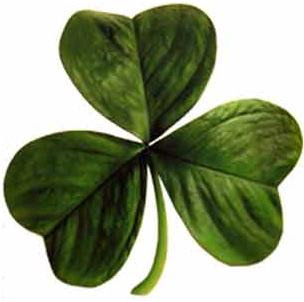
Saint Patrick's Day (Irish: Lá Fhéile Pádraig) is a religious holiday celebrated internationally on 17 March. It is named after Saint Patrick (c. AD 387–461), the most commonly recognised of the patron saints of Ireland. It originated as a Catholic holiday and became an official feast day in the early 17th century. It has gradually become more of a secular celebration of Irish culture.
|
|
 Little is known of Patrick's early life, though it is known that he was born in Roman Britain in the 4th century, into a wealthy Romano-British family. His father and grandfather were deacons in the Church. At the age of sixteen, he was kidnapped by Irish raiders and taken captive to
Little is known of Patrick's early life, though it is known that he was born in Roman Britain in the 4th century, into a wealthy Romano-British family. His father and grandfather were deacons in the Church. At the age of sixteen, he was kidnapped by Irish raiders and taken captive to 
In 432, he again said that he was called back to
Wearing of the green
Originally, the colour associated with Saint Patrick was blue. Over the years the colour green and its association with Saint Patrick's day grew. Green ribbons and shamrocks were worn in celebration of St Patrick's Day as early as the 17th century. He is said to have used the shamrock, a three-leaved plant, to explain the Holy Trinity to the pagan Irish, and the wearing and display of shamrocks and shamrock-inspired designs have become a ubiquitous feature of the day. In the 1798 rebellion, in hopes of making a political statement, Irish soldiers wore full green uniforms on 17 March in hopes of catching public attention. The phrase "the wearing of the green", meaning to wear a shamrock on one's clothing, derives from a song of the same name.
have used the shamrock, a three-leaved plant, to explain the Holy Trinity to the pagan Irish, and the wearing and display of shamrocks and shamrock-inspired designs have become a ubiquitous feature of the day. In the 1798 rebellion, in hopes of making a political statement, Irish soldiers wore full green uniforms on 17 March in hopes of catching public attention. The phrase "the wearing of the green", meaning to wear a shamrock on one's clothing, derives from a song of the same name.
As well as Dublin, many other cities, towns, and villages in Ireland hold their own parades and festivals, including Cork, Belfast, Derry, Galway, Kilkenny, Limerick, and Waterford.
The biggest celebrations outside
The shortest St Patrick's Day parade in the world takes place in Dripsey, Cork. The parade lasts just
Postcard postmarked

Cap comentari:
Publica un comentari a l'entrada